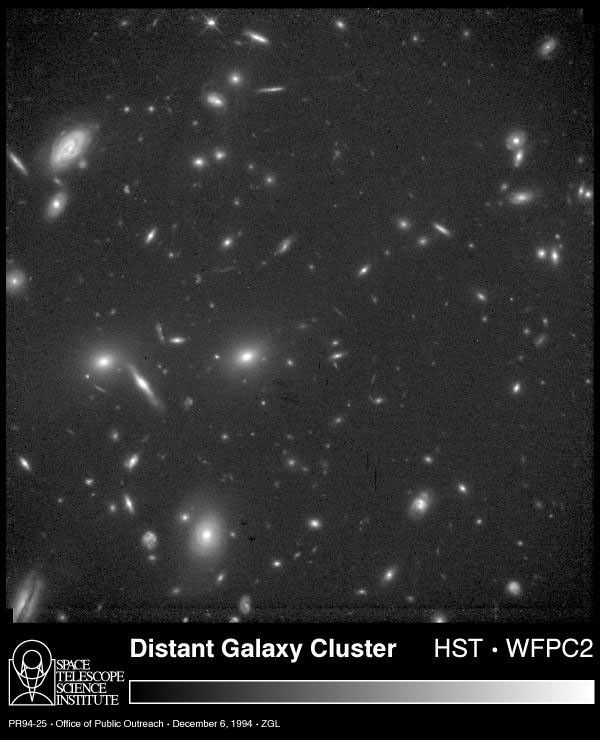1 min read
Galaxies: Snapshots in Time

This sequence of NASA Hubble Space Telescope (HST) images of remote galaxies offers tantalizing initial clues to the evolution of galaxies in the universe.
[far left column] These are traditional spiral and elliptical-shaped galaxies that make up the two basic classes of island star cities that inhabit the universe we see in our current epoch (14 billion years after the birth of the universe in the Big Bang). Elliptical galaxies contain older stars, while spirals have vigorous ongoing star formation in their dusty, pancake-shaped disks. Our Milky Way galaxy is a typical spiral, or disk-shaped galaxy, on the periphery of the great Virgo cluster. Both galaxies in this column are a few tens of millions of light-years away, and therefore represent our current stage of the universe's evolution.
[center left column] These galaxies existed in a rich cluster when the universe was approximately two-thirds its present age. Elliptical galaxies (top) appear fully evolved because they resemble today's descendants. By contrast, some spirals have a frothier appearance, with loosely shaped arms of young star formation. The spiral population appears more disrupted due to a variety of possible dynamical effects that result from dwelling in a dense cluster.
[center right column] Distinctive spiral structure appears more vague and disrupted in galaxies that existed when the universe was nearly one-third its present age. These objects do not have the symmetry of current day spirals and contain irregular lumps of starburst activity. However, even this far back toward the beginning of time, the elliptical galaxy (top) is still clearly recognizable. However, the distinction between ellipticals and spirals grows less certain with increasing distance.
[far right column] These extremely remote, primeval objects existed with the universe was nearly one-tenth its current age. The distinction between spiral and elliptical galaxies may well disappear at this early epoch. However, the object in the top frame has the light profile of a mature elliptical galaxy. This implies that ellipticals formed remarkably early in the universe while spiral galaxies took much longer to form.
Related Images & Videos

A Distant Cluster of Galaxies
[left] – One of the deepest images to date of the universe, taken with NASA's Hubble Space Telescope (HST), reveals thousands of faint galaxies at the detection limit of present day telescopes. Peering across a large volume of the observable cosmos, Hubble resolves thousands of...

Galaxies in the Young Universe
[left] – This image of a small region of the constellation Sculptor, taken with a ground-based photographic sky survey camera, illustrates the extremely small angular size of a distant galaxy cluster in the night sky. Though this picture encompasses a piece of the sky about the...

Remote Galaxy Clusters: Lost Ancestors to Our Milky Way Galaxy
This NASA Hubble Space Telescope (HST) image of the central portion of a remote cluster of galaxies (CL 0939+4713) as it looked when the universe was two-thirds of its present age. Hubble's high resolution allows astronomers to study, for the first time, the shapes of galaxies...
Share
Details
Claire Andreoli
NASA’s Goddard Space Flight Center
Greenbelt, Maryland
claire.andreoli@nasa.gov















































